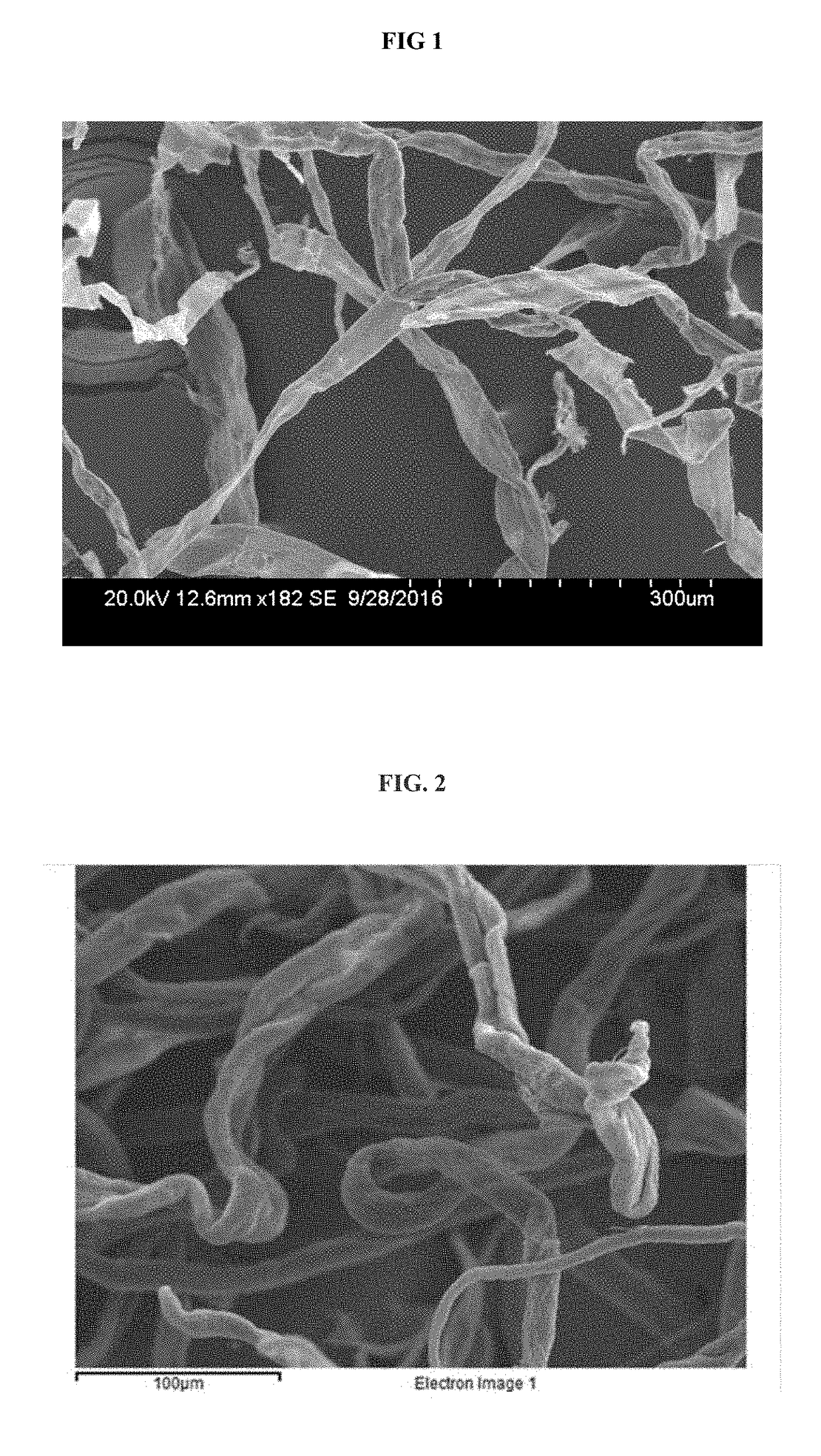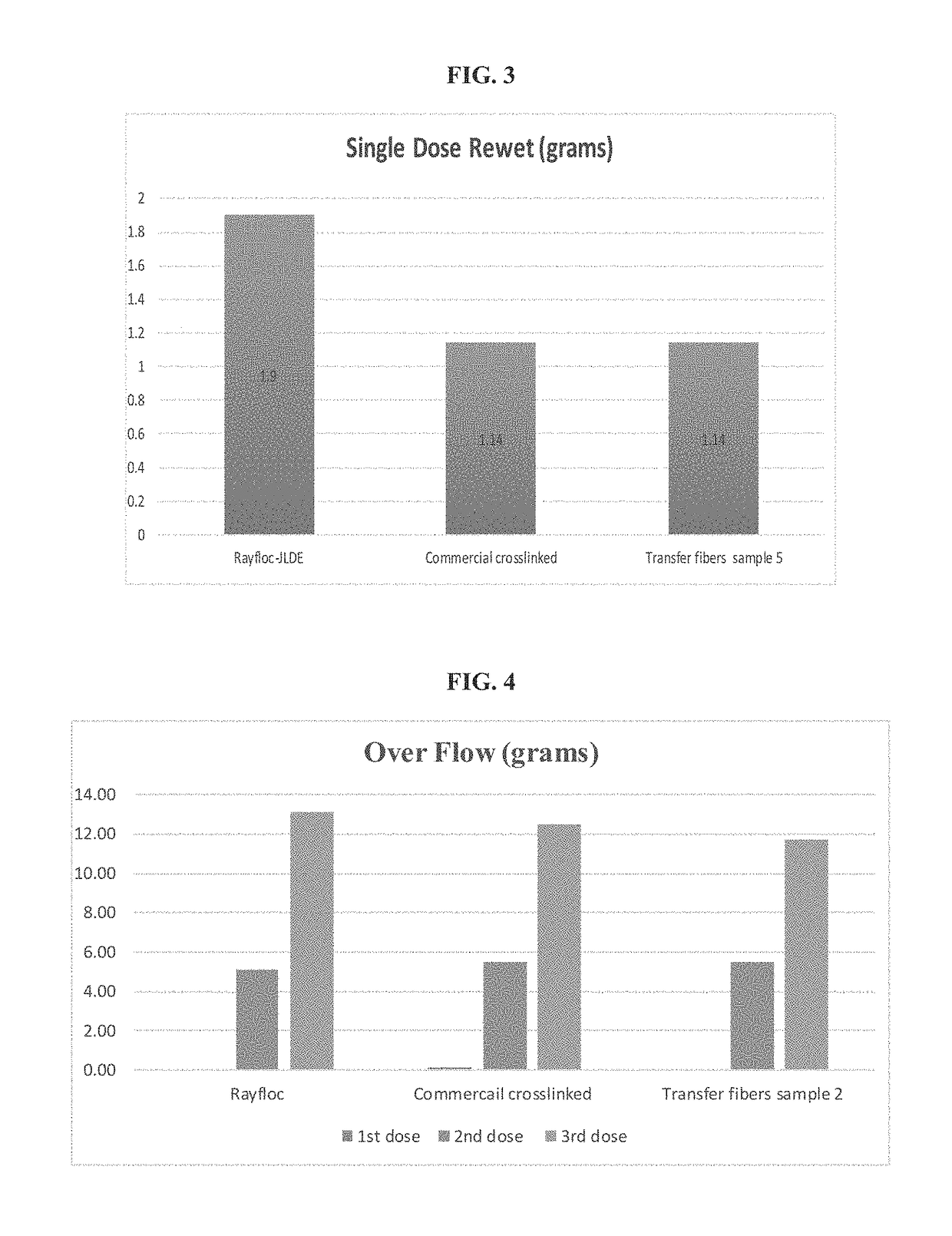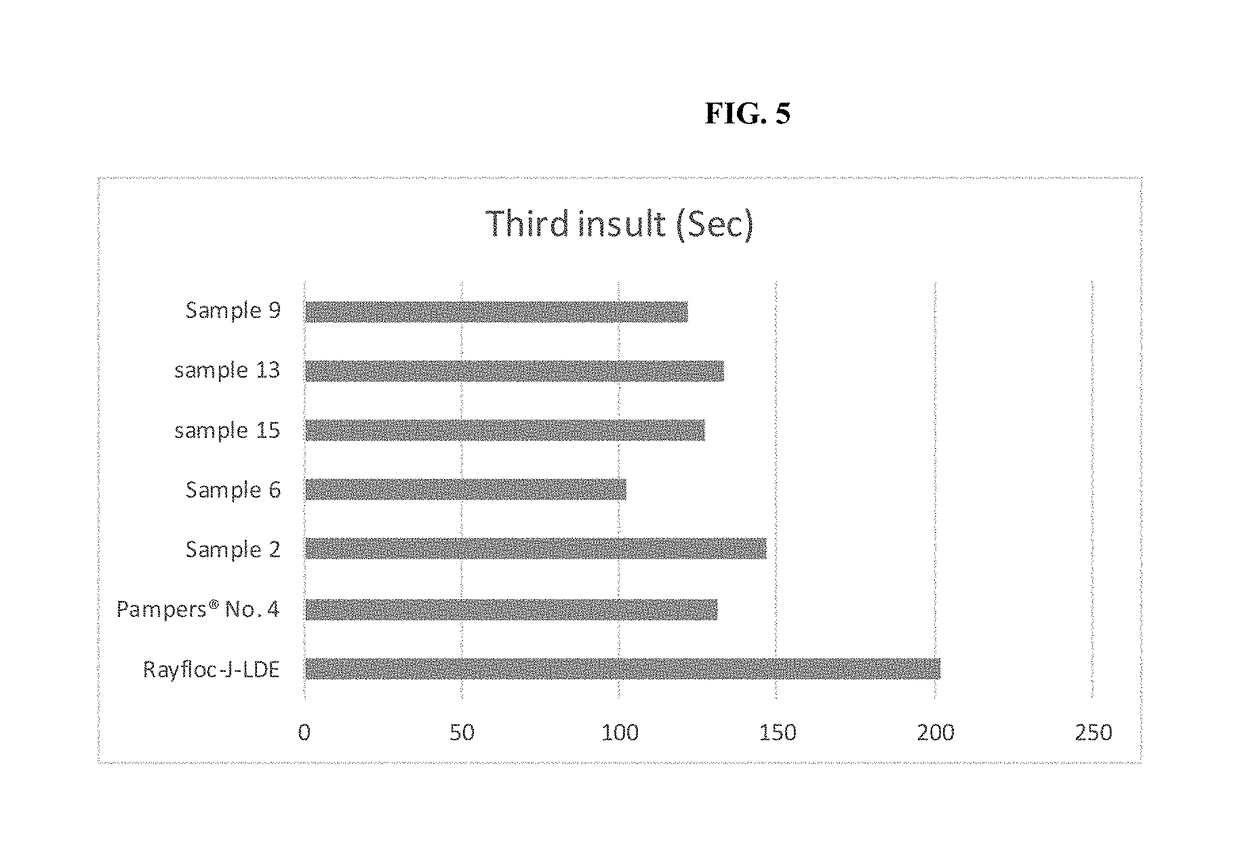Dual function reagent, transfer fibers, transfer layer, and absorbent articles
- Summary
- Abstract
- Description
- Claims
- Application Information
AI Technical Summary
Benefits of technology
Problems solved by technology
Method used
Image
Examples
example 1
[0067]To a citric acid (20.0 g, 0.104 mol) solution in water (20 mL) was added polyethylene glycol diglycidyl ether (10.0 g, 0.02 mol). The produced solution was stirred at room temperature until a clear viscous solution was obtained (12 hr). The solution was stirred for another 6 hours, then it was diluted with distilled water to about 800 mL. The pH was then adjusted to about 3.0 with an aqueous solution of NaOH (10 wt %). After stirring for a few minutes sodium hypophosphite (3.0 g, 0.3% by wt. of solution) was added. The stirring was continued for few more minutes, then more water was added to adjust the total weight of the solution to 1.0 kg (final concentration of dual function reagent is 3.0%).
[0068]The produced solution was added to a plastic tray, a sheet of Rayfloc-J-LDE (12× 12 inch2, basis weight 680 gsm) was dipped in the solution then pressed to achieve the desired level of dual function reagent on pulp (about 3.0 wt. %). Several sheets were prepared in the same manner...
example 2
[0069]To an aqueous solution (50%) of citric acid (20.0 g, 0.104 mol) was added polypropylene glycol diglycidyl ether (12.8 g, 0.02 mol). The produced suspension was stirred at room temperature until a clear viscous solution was obtained (12 hr). The solution was stirred for another 6 hours, then it was diluted with distilled water to about 800 mL. The pH was then adjusted to about 3.0 with an aqueous solution of NaOH (10 wt %). After stirring for a few minutes sodium hypophosphite 3.0 g (0.3% by wt. of solution) was added. The stirring was continued for few more minutes, then more water was added to adjust the total weight of the solution to 1.0 kg (final concentration of dual function reagent is 4.0%).
[0070]The produced solution was added to a plastic tray, a sheet of Rayfloc-J-LDE (12×12 inch2, basis weight 680 gsm) was dipped in the solution then pressed to achieve the desired level of dual function reagent on pulp (about 4.0 wt. %). Several sheets were prepared in the same mann...
example 3
[0071]To an aqueous solution (50%) of citric acid (30.0 g, 0.153 mol) was added polypropylene glycol diglycidyl ether (12.8 g, 0.02 mol). The produced suspension was stirred at room temperature until a clear viscous solution was obtained (12 hr). The solution was stirred for another 6 hours, then it was diluted with distilled water to about 800 mL. The pH was then adjusted to about 3.0 with an aqueous solution of NaOH (10 wt %). After stirring for a few minutes sodium hypophosphite 3.0 g (0.3% by wt. of solution) was added. The stirring was continued for few more minutes, then more water was added to adjust the total weight of the solution to 1.0 kg (final concentration of dual function reagent is 4.0%).
[0072]The produced solution was added to a plastic container, a sample dry Rayfloc-J-LDE in a fluff form was suspended in the solution at 4% consistency, mixed for 5 min, sheeted (12×12 inch2, basis weight 680 gsm) and pressed to a 100% liquid pick up (3% dual function reagent on pul...
PUM
| Property | Measurement | Unit |
|---|---|---|
| Temperature | aaaaa | aaaaa |
| Temperature | aaaaa | aaaaa |
| Temperature | aaaaa | aaaaa |
Abstract
Description
Claims
Application Information
 Login to View More
Login to View More - R&D
- Intellectual Property
- Life Sciences
- Materials
- Tech Scout
- Unparalleled Data Quality
- Higher Quality Content
- 60% Fewer Hallucinations
Browse by: Latest US Patents, China's latest patents, Technical Efficacy Thesaurus, Application Domain, Technology Topic, Popular Technical Reports.
© 2025 PatSnap. All rights reserved.Legal|Privacy policy|Modern Slavery Act Transparency Statement|Sitemap|About US| Contact US: help@patsnap.com



